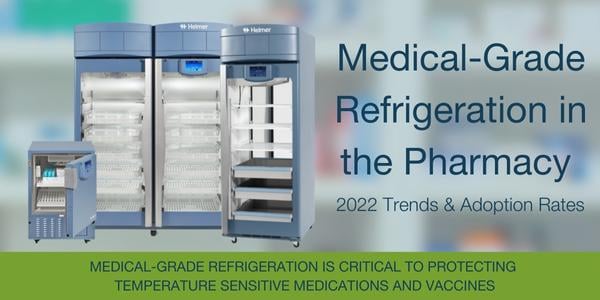Pharmacy Purchasing & Products (PP&P) published the results of its 17th Annual State of Pharmacy Automation Survey. This survey is based on data provided by 363 pharmacy leaders across a wide range of facility type, size, and location.
Overall Medical-Grade Refrigeration Adoption is High
95 percent of surveyed facilities have adopted medical-grade refrigeration to store medications and vaccines. Adoption varies by facility size, with facilities supporting 201 or more beds at 97 percent adoption and facilities with 200 or fewer beds averaging between 91 and 92 percent adoption.
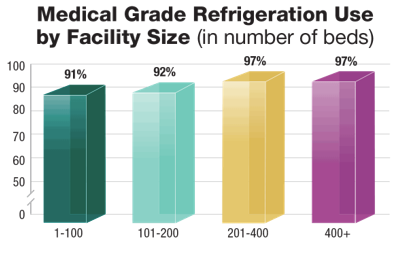
State of Pharmacy Automation. Pharm Purch Prod.2022; 8-1-64
Use of Medical-Grade Refrigeration On-the-Unit is Lagging
While overall adoption of medical-grade refrigeration is high, full adoption of medical-grade refrigeration on-the-unit is lower. 36 percent of respondents have not fully adopted medical-grade cold storage on-the-unit. Storing pharmaceuticals in non-purpose-built units creates significant risk for temperature excursions that may negatively impact medication safety and efficacy as well as increase waste.
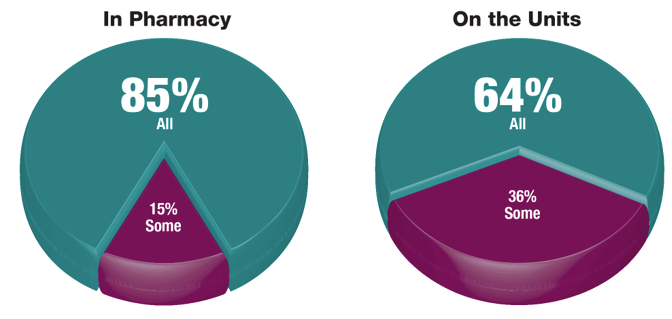 State of Pharmacy Automation. Pharm Purch Prod.2022; 8-1-64
State of Pharmacy Automation. Pharm Purch Prod.2022; 8-1-64
Point-of-Care Medication Distribution is Most Common Model
Most facilities, regardless of size, have adopted a point-of-care medication distribution model. 49 percent of respondents currently utilize this model, and that number is expected to increase to 56 percent in the next five years.
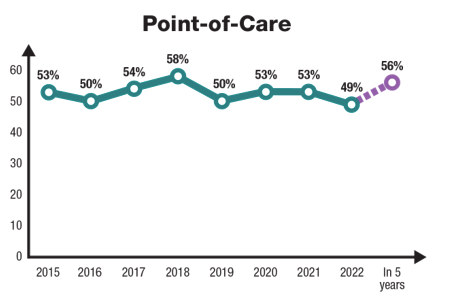
State of Pharmacy Automation. Pharm Purch Prod.2022; 8-1-64
In this case, point-of-care distribution means 80 percent or more of inpatient beds receive medications from automated dispensing cabinets (ADCs), which are restocked from a central pharmacy. 93 percent of respondents have adopted ADCs for medication distribution.
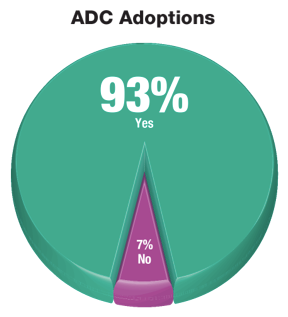
State of Pharmacy Automation. Pharm Purch Prod.2022; 8-1-64
The heavy adoption of the point-of-care medication distribution model and the lagging adoption of medical-grade refrigeration on-the-unit means facilities should focus on implementing medical-grade refrigeration wherever pharmaceuticals are stored, including attachment to ADCs.
Automated Temperature Monitoring Adoption Continues to Climb
During the last 13 years, facilities taking a manual approach to temperature monitoring has fallen from 67 to 7 percent currently. Nearly two-thirds of facilities still relying on manual temperature monitoring plan to adopt automation in the near future.
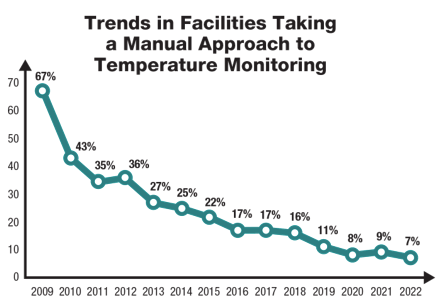
State of Pharmacy Automation. Pharm Purch Prod.2022; 8-1-64
Choosing medical-grade refrigeration that includes automated temperature monitoring technology or easily integrates with the many standalone automated temperature monitoring systems available will help improve efficiency and ensure pharmaceuticals are safely stored across the facility.
Helmer Scientific Continues to be a Leading Refrigeration Vendor
48 percent of respondents surveyed utilize Helmer refrigerators and freezers to store pharmaceuticals in their facilities. GX Solutions refrigerators and freezers from Helmer provide optimal temperature performance and utilize variable capacity compressors and natural hydrocarbon refrigerants to reduce noise output, electricity consumption, and greenhouse gas emissions.
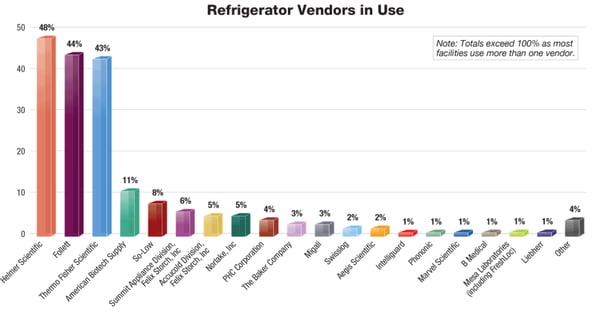
State of Pharmacy Automation. Pharm Purch Prod.2022; 8-1-64
They are available in a wide range of sizes and configurations to meet most application requirements, they are compatible with most automated temperature monitoring systems, and offer solutions that are compatible with the most common ADCs currently in use.
Other Blogs You Might Be Interested In...
- Pharmacy Refrigerators: The Benefits of GX Solutions from Helmer Scientific
- Demystifying Medical Grade Refrigeration
- The Importance of Point-of-Care Access to Medications
- Medical-Grade Refrigeration Purchasing Expanding Outside of Central Pharmacy
This survey confirms pharmacists recognize the importance of using medical-grade refrigeration to store medications and vaccines in the pharmacy. It also reinforces the importance of increasing adoption of medical-grade refrigeration and automation technology on-the-unit, as well as in remote locations such as clinics and physicians’ offices to promote the safe storage of pharmaceuticals across the continuum of care.
Graphics from PP&P


